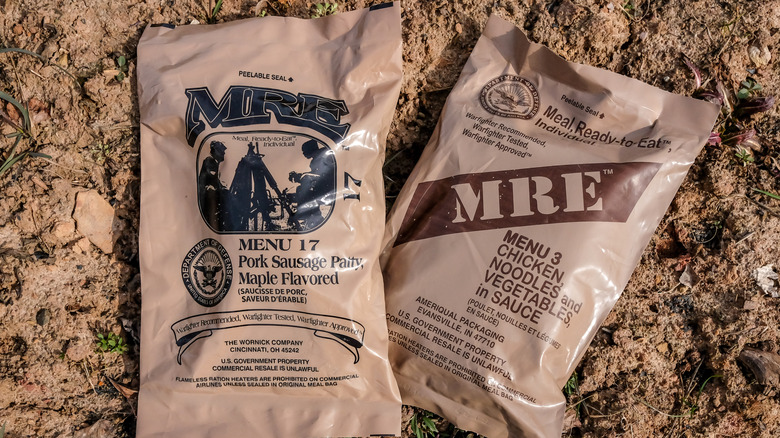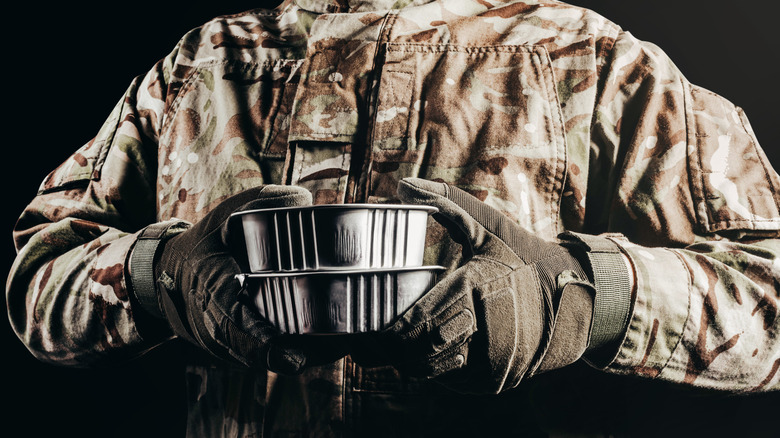How Does The Flameless Heater Work In Military MREs?
Using technology to transform the U.S. military, thus keeping soldiers safe and well equipped to handle every situation, also extends to feeding those soldiers. This means that Meals Ready-to-Eat, or MREs, are just as important as any high-tech weapon they can carry, or any advanced vehicle they can operate. But heating those MREs requires a flameless heater, also known as a Flameless Ration Heater, or FRH, a low-tech solution that works by combining magnesium metal with iron dust and salt in a small heater pad.
That pad is included in all MREs, and is activated when water is added. The water triggers oxidation of the magnesium, which causes the pad to get very hot and begin boiling over with steam. Once the process begins, the pad is put back in the original box with the MRE pouch. From there, it's just a short 10-minute wait and the hot meal is ready to eat.
In the event water is not readily available, MREs can be eaten cold, which means the flameless heater could be discarded. Though the military tested new heating methods that worked with muddy water or even urine back in the early 2000's, MREs with the FRH solution remains the standard for military forces around the world.
MREs with flameless heaters improved life for soldiers in the field
The Flameless Ration Heater, or FRH, was first introduced in 1990 when the U.S. military needed a way for soldiers to quickly and easily get hot food, despite their environment. This new self-heating method proved so successful that it was implemented in Meals Ready-to-Eat, or MREs, from that point forward, with the Luxfer Magtech company producing nearly 3 billion FRHs since then.
But before the invention of the FRH, heating food in a war zone was undoubtedly a challenge. Soldiers would need to boil the food pouch from their MREs in water, or even use the sun itself to warm it up. If all else failed, the MRE could be heated from a campfire, or even by laying it on top of a car engine. Preparing food prior to the advent of MREs was even tougher, as traditional combat rations required the extra step of opening cans before the contents could be heated.
Combat rations were heavy as well, which only added to the burden of the packs that soldiers were already carrying. These canned rations also spoiled much quicker than MREs, which made them more expensive over time, and often didn't have the proper nutrients soldiers needed to stay healthy.

